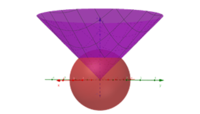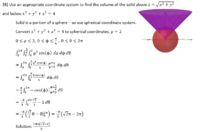I was working on spherical coordinates - this link goes to my last question. Now though, I'm working on this question:

I drew a picture:

And this is my work so far:

(Thank you @Dr.Peterson for helping me learn how to figure this out )
)
Here is my question: I can see what \(\phi\) is from the picture - but, is there a way to numerically solve for \(\phi\)? If yes, how?
I drew a picture:

And this is my work so far:

(Thank you @Dr.Peterson for helping me learn how to figure this out
Here is my question: I can see what \(\phi\) is from the picture - but, is there a way to numerically solve for \(\phi\)? If yes, how?

